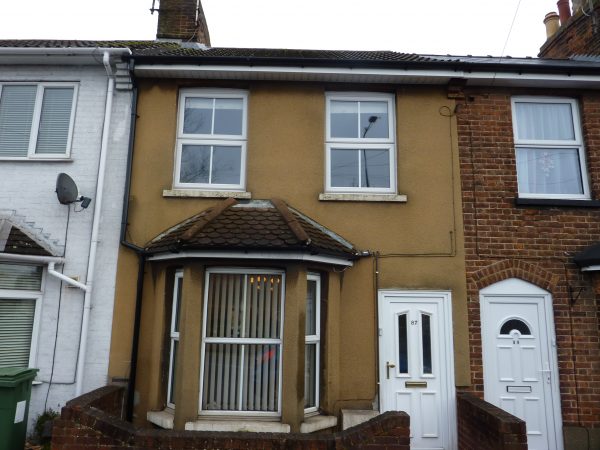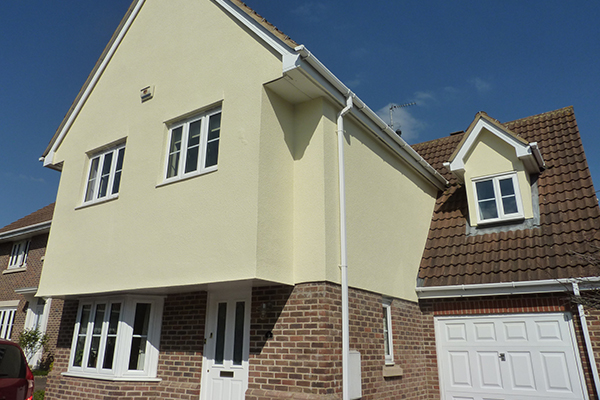Can a 15-year-old building look like a freshly built one? Like without any repainting, repair or compromise? If I told you the same few decades ago, you might not even believe me. But now, with advanced formulation and techniques, you can nod a big YES to such ridiculous possibilities. Exterior wall coatings would do the job for you!
We usually cover the exterior wall for decoration and special events. However, it also depends on how well you cover them. Is it by paints or by exterior wall coatings? If you are a new homeowner or someone looking to renovate your existing home, grab on this bandwagon as we discuss what exterior wall coatings are and why you should try them out!

What are Exterior Wall Coatings?
As the name suggests, the exterior wall coatings are coatings applied on the outer wall surfaces. But if you generalise them to traditional paints, you might be on the wrong side of the wall.
Exterior wall coatings are specially designed wall treatments, superior to traditional paints in appearance and functionality. They have endless options to provide textural coverage to the wall surface and are often referred to as textured coating or masonry coating.
It takes extra care to make these coatings. Thus, to meet their goals, these coatings are consciously formulated with high-quality ingredients, which are often expensive and eventually shoot up the overall price.
How are Exterior Wall Coatings better than the Traditional Paints?
We guess this was the first thing that popped into your mind when you first heard about exterior wall coating. To explain things better, let’s look into a few key aspects.
How much do Wall coatings Cover?
How often do you find old buildings with cracks and chipped paint walls? These are signs of deteriorating wall surfaces. Painting over existing wall surfaces will only cover them superficially. Unless you do some repair work before your painting job, the cracks and similar damages will still be visible from beneath.
The main difference here would be the capacity of coverage. Both paints and exterior wall coating are meant for the same coverage purpose though wall coatings do a better job of it. Even the most supreme quality paints have a relatively thinner coverage than the wall coatings. They don’t cover the cracks and wall damage like wall coatings would do.
Are Wall Coatings Weather Resistant?
If coverage is important, what is the reason to cover an exterior wall? Well, it’s a simple one-word answer – Protection.
Masonry walls are porous. Building’s outer wall is the most important layer of protection against external weather. Paints naturally fade. Though the acrylic paints in the market are specifically developed for outdoor use, it provides minimal protection compared to the wall coatings. You can never match the weatherproofing capacity of the wall coating to that of any outdoor paints.
They are simply out of the league!

How do you Apply Wall Coatings?
The next key difference on the list is how you apply them? The traditional paints require simple brushes and rollers though it might end as a nightmare when you cover uneven surfaces.
Painting through the gaps and cracks of the brick wall will be difficult and exhaustive. On top of that, there is no surety of full coverage, so you might have to apply a few more layers to have a smooth, uniform finish.
On the other hand, the exterior wall coatings are directly sprayed onto the outer surface for full coverage. The process is simple yet effective. The quality of these coatings to easily adhere to the uneven wall surfaces and textures makes it way superior to regular paints.
How long do Wall Coatings last?
Depending on how durable, strong and waterproof the coverage is, we can decide its longevity.
Paints are nowhere near the wall coatings in longevity! Both can last for 15 plus years but at what state is the matter. Wall coatings can stand bright as a new building; meanwhile, paints fade and develop mould and algae growth.
Even though exterior wall coating is a costly makeover, they make up for the cost of rework, unlike the paints, where you might need to repaint them every two or three years to keep up the fresh look. Affordable, but is it cost-effective in the long run?
Imagine retaining your wall’s beauty without rework, maintenance, or damage for years to come. Most wall coating companies give surety for up to 15 years. Doesn’t exterior wall coating sound like a smart investment?
Are Wall Coatings Eco Friendly?
Have you ever felt suffocated when you entered a freshly painted room? It mustn’t have been a nice experience, and wall coating will save you from such miseries.
Most paints are made of volatile organic compounds (VOCs). Every time we open a new can of paint, these toxic gases enter the air and affect our health and the atmosphere. On the extreme opposite end, we have the wall coating, made of all-natural, sustainable and eco-friendly products.
Things to consider before opting for exterior wall coatings
- Prepare the wall surface before you apply them. Close any cracks or damages and seal the wall before applying wall coatings.
- Ensure you have covered all your windows and doors to avoid paint spills. These are spray paints, and you can easily lose control of your space boundaries.
- Choose the right wall costing depending on your secondary demands like insulation and soundproofing. You can specialise your coatings. There are water-based and resin-based coatings. This is where technicals play a role.
- Opt for a professional person to do the job for you. Unlike painting, you can’t take it as your new DIY project.
- You can create different textured effects using the exterior coating by spending on different building materials.
You are the Decision Maker!
You are the decision-maker, and the choice is yours to either choose traditional paints or conventional exterior wall coating. After such a prominent advantage we hope that your choice should be obvious by now.
Would you prefer exterior wall coating once and stay care-free for 15 years or keep repainting your wall for every 2 to 3 years. The choice is yours.





